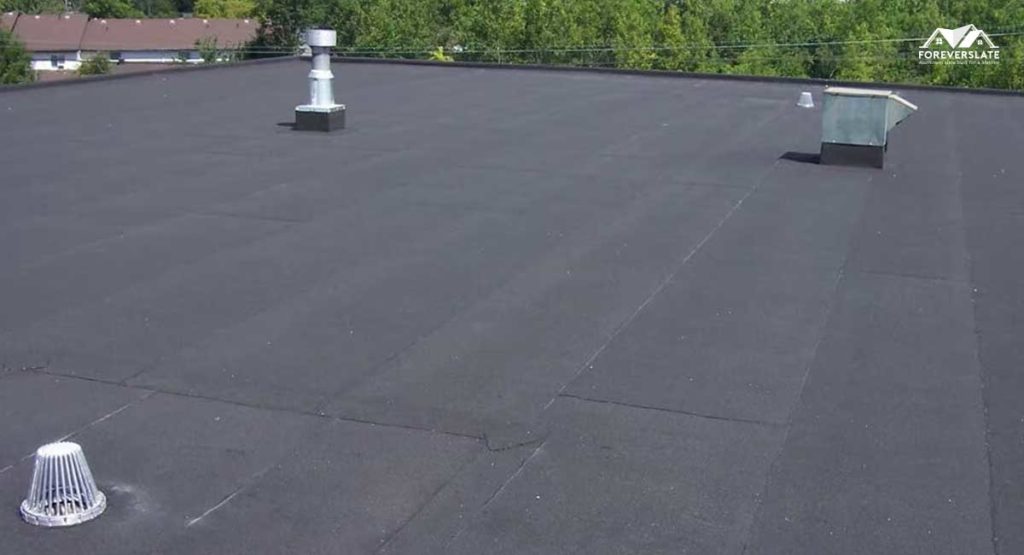Published On September 13 , 2023

Commercial roofing plays a crucial role in the protection and functionality of businesses across Long Island. Whether you’re a business owner, property manager, or simply curious about commercial roofs, this guide will answer some common questions and shed light on the best roofing options for commercial buildings in Long Island.
A commercial roof is a specialized roofing system designed to cover large-scale structures such as office buildings, warehouses, retail outlets, and industrial facilities. These roofs differ from residential roofs in terms of scale, materials, and structural requirements. Commercial roofing solutions are engineered to withstand the unique challenges posed by larger buildings and the commercial environment.

Long Island’s climate can be diverse, with cold winters and humid summers. When it comes to selecting the best roofing for commercial buildings in this region, several options stand out:

Flat roofs are a popular choice for commercial buildings due to their cost-effectiveness and suitability for HVAC equipment placement. EPDM, TPO, and PVC are common flat roofing materials known for their durability and energy efficiency.

Metal roofs are renowned for their longevity and resistance to severe weather conditions. They are an excellent choice for commercial buildings in Long Island, offering durability and low maintenance.

Flat roofs are a popular choice for commercial buildings due to their cost-effectiveness and suitability for HVAC equipment placement. EPDM, TPO, and PVC are common flat roofing materials known for their durability and energy efficiency.

Sustainable roofing options like green roofs have gained popularity due to their environmental benefits. Green roofs can help with insulation, reduce energy costs, and enhance a building’s aesthetics.
Understanding the components of a commercial roof is crucial for proper maintenance and long-term performance. A typical commercial roofing system consists of several key elements:
Roof Membrane: The topmost layer that provides waterproofing and protection from the elements.
Insulation: Installed beneath the membrane, insulation helps regulate temperature and energy efficiency.
Roof Deck: The structural base that supports the roof system.
Flashing: These are metal pieces used to seal roof penetrations like vents and chimneys.
Drainage System: Proper drainage is essential to prevent water accumulation, which can lead to leaks and damage.
The choice of roofing type for commercial buildings can vary based on factors like budget, climate, and building design. However, in Long Island, the flat roof is the most commonly found roofing type on commercial buildings. Here’s why:
Cost-Effective: Flat roofing is typically more cost-effective to install and maintain than pitched roofs, making it a popular choice for commercial properties.
Space Utilization: The flat surface of these roofs allows for the installation of HVAC equipment, solar panels, or even rooftop gardens, optimizing the available space.
Durability: When properly maintained, flat roofing systems can offer excellent durability and resistance to harsh weather conditions.
In conclusion, commercial roofing in Long Island requires careful consideration of the local climate and building requirements. Selecting the right roofing material and understanding the components of a commercial roof are essential for long-term performance and protection of your investment.
For more information on commercial roofing services in Long Island, visit foreverslate.com. Our experts can help you make informed decisions and provide professional roofing solutions tailored to your needs.
Meet Cris – a seasoned construction industry professional with over 15 years of hands-on experience in building and managing residential, commercial, and industrial projects. He started as a laborer and worked his way up to become a project manager. Cris is passionate about sharing his knowledge and insights with others who are interested in building construction. He has a degree in architecture and is constantly reading and researching to stay on top of the latest trends, materials, and techniques. His aim is to help people better understand the complexities of the industry and make informed decisions when it comes to building their own structures.